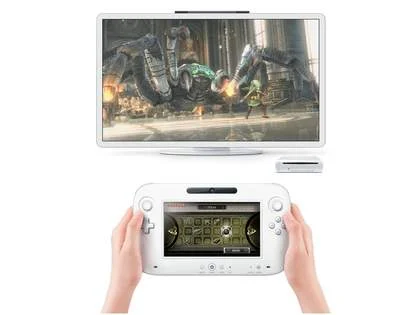The first 14 months of the Wii U is expected to be disappointing compared to Wii hardware sales.
Piper Jaffray analyst Michael Olson believes that the new Nintendo console will only move about 10 million units within between the launch date this November and the end of 2013.

“We remain cautious on the sell-through potential for the Wii U due to a soft economy, unprecedented competition and what we view as a disappointing clunky form factor, user interface and operating system,” Olson said.
Not helping things is the fact that the console will cost between $300 and $350. That does make it the most expensive Nintendo console of all time, but it is below previous speculation that Nintendo might charge $400 or even $500 for the console, because it essentially comes with its own iPad-esque tablet.
The $300 version will get you the bare bones, with one of the GamePad tablet controllers and 8 GB of memory. There will also be a $350 version that comes with 32 GB, and the game Nintendoland.
Nintendo’s share has only continued to grow in the last five years in Japan, saying that it now holds more of the industry than any other time since the Wii launched.
It is a stark contrast to the United States, where Nintendo is floundering and seems like a relic compared to the increasingly enhanced PS3 and Xbox 360. Here, the Wii U is an absolute necessity to keep Nintendo afloat.
So why the difference? For starters, Nintendo is of course based in Japan. It is no surprise that the Xbox brand isn’t hugely successful there. The Xbox 360 works in the US because it’s designed specifically for this audience. The same thing is at play with Japan and Nintendo.
However, Sony is also based in Japan. So why isn’t the PS3 at least taking away market share as its power increases and the Wii diminishes? Any way you answer that, you’ll reach the crux of the paradigm shift in the industry. It used to be that video games were video games – you just wanted the one with the cooler graphics.
That is not the case anymore. When you choose a console, you’re choosing a lifestyle. This is a unique aspect of the current console generation, and it is tearing Nintendo apart – it needs to stick to its roots to appear to the Japanese crowd, but in doing so it fails to appeal to the much larger American crowd.
What these numbers show is that Nintendo’s resistance to create a true Xbox/PS3 rival is not because it doesn’t understand the industry; it’s because it finds itself at the point of needing to effectively choose between two different industries – the traditional market that Japanese gamers still crave or the new environment being embraced by the west. The Wii U has a tough road ahead if it wants to grab both of those ideals.






